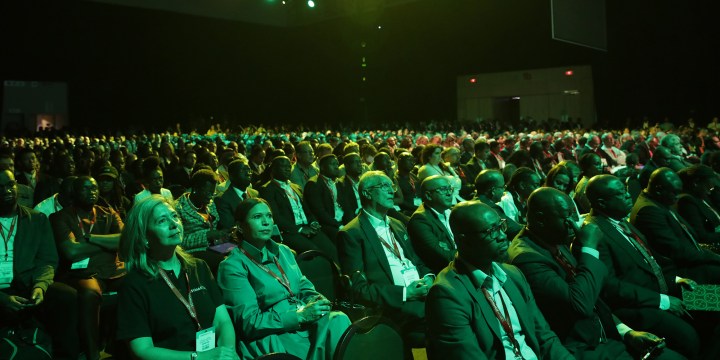BUSINESS REFLECTION
After the Bell: The siren song of downstream beneficiation

If you are an avid reader of the speeches of African presidents, as I am because I often struggle to sleep, you might notice a word that comes up with extraordinary regularity: beneficiation.
Beneficiation, at least downstream beneficiation, seems like such an obvious target on which governments would like to set their sights. Currently, the Mining Indaba is happening in Cape Town, and I’m willing to bet that the word ‘beneficiation’ hangs in the hallways like a bright star. Every mining minister of every African country seems likely to be captured by the siren song of downstream beneficiation. President Cyril Ramaphosa, just for one, mentioned it in both his 2022 and 2021 speeches to the indaba.
And in a way, it’s easy to see why beneficiation has such a strong lure. If you are a big seller of raw materials, as many African countries are, and you are keen to develop your country, it’s just a hop, skip and jump to the idea that you should turn those raw materials into a competitive advantage. I mean, for god’s sake, it’s like you are halfway there already. And it’s perplexing to you that mining companies don’t share your jones for this obvious advantage.
And, to be honest, I too have been tantalised by the idea, particularly since many minerals in SA are, to a lesser or greater extent, beneficiated, most notably platinum group metals (PGMs). Yet, the partial success of the beneficiation effort is its own worst enemy because it encourages governments to push harder.
So why does the idea work so badly? To answer this, I think the history of the Australian iron ore industry is one of many great examples. Iron ore is by far Australia’s biggest single export, and constitutes about a third of global production and about half of the seaborne trade. Australia produces about 900 million tonnes of iron ore a year. SA, by the way, produces around 60 million tonnes, just inside the world’s top 10, and it’s been that way for almost a decade.
So, you might think, here is a country that is the world’s biggest producer; it’s a sophisticated, developed nation with great universities and a very active business sector — why don’t they take the next step and produce steel?
Australia does have some steelworks, but produces only 0.3% of the global production, despite being a huge seller of metallurgical coal, a crucial component of steel production. And this number declined from a peak of 1.2% in 1994. The disparity between the country’s iron ore production and its steel production is just extraordinary.
Visit Daily Maverick’s home page for more news, analysis and investigations
The simple answer is that Australia did try, extremely hard, to establish a steel industry, to the extent that the export of iron ore was actually banned for a period. During World World 1, the Australian government passed the Iron and Steel Products Bounty Act of 1922 to protect the steel industry with import tariffs. The country’s biggest miner, BHP, became a monopoly producer in the steel industry and, basically to deprive Japan of steel during World War 2, iron ore exports were restricted between 1938 and 1960.
BHP expanded its steel production after the war, and behind the tariff wall the company’s steel business prospered, right through into the 1970s. But in the 1980s, BHP started making losses. To shore up the industry, the government imposed numeric quotas that guaranteed 80% to 90% of local production to local producers. Wowzer. How could the company not succeed in these circumstances?
And even with these in place, even with lots of local ore, even once the Iron Ore Beneficiation Agreement Act was passed in Western Australia, the industry still struggled. Eventually, in 2011, the Aussie governments, both national and regional, just walked away from it all, and the act was scrapped.
So that was a pretty long road. How did it turn out after that? Well, and this is weird, things got a lot better. In 2011, Australia was selling about 400 million tonnes of iron ore, and that doubled over the next five years, massively outperforming — and outearning — the now defunct steel industry.
If you think about it, all of this makes perfect economic sense. Producing a metal locally isn’t necessarily a big advantage (outside of transport costs) for local buyers because there is no reason for the local miner to charge local customers less than international customers — even when that customer is part of the same company! To change this equation, the government had to intervene, but intervention to create an industry is almost certain to be a reason for its rise — and fall. I’m willing to bet that if the Australian government had done nothing to encourage the formation of a local steel industry, it would today have a thriving steel industry — and a thriving iron ore industry.
Like water rising to the point of its overflow, industries gravitate towards business in context. When governments change that context, they unwittingly build a lack of international competitiveness into the equation. It’s obvious.
So, should governments just do nothing? There is that argument, but I do think there is a lot the government should do: focus on productivity issues, maintain competition, create positive business conditions, seed projects carefully, and be conscious of the actual skills base available and the actual competitive advantages. And, of course, maintain stable, facilitative tax regimes. Often concentrating on downstream issues will help more than supporting upstream initiatives, because you are focusing on what already works.
Interestingly, during this year’s speech, Ramaphosa didn’t mention beneficiation. Maybe there is just too much else going on. Is the penny dropping? I’m not sure. To be honest, I don’t think so. DM/BM



















Thanks Tim. Keep up the excellent work.